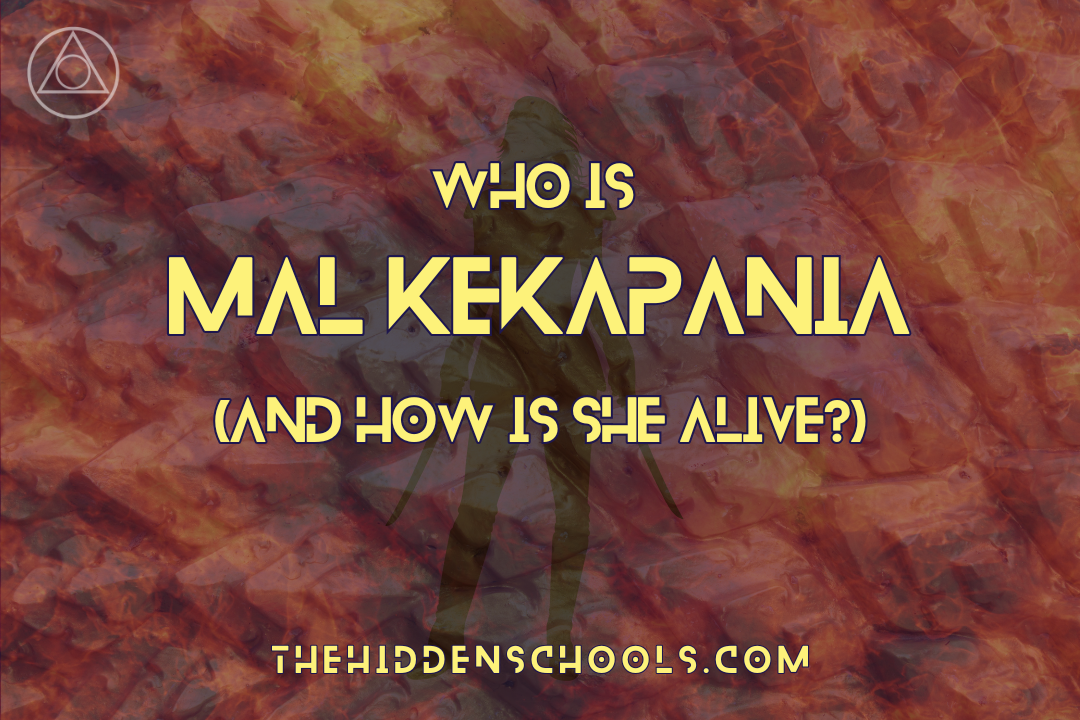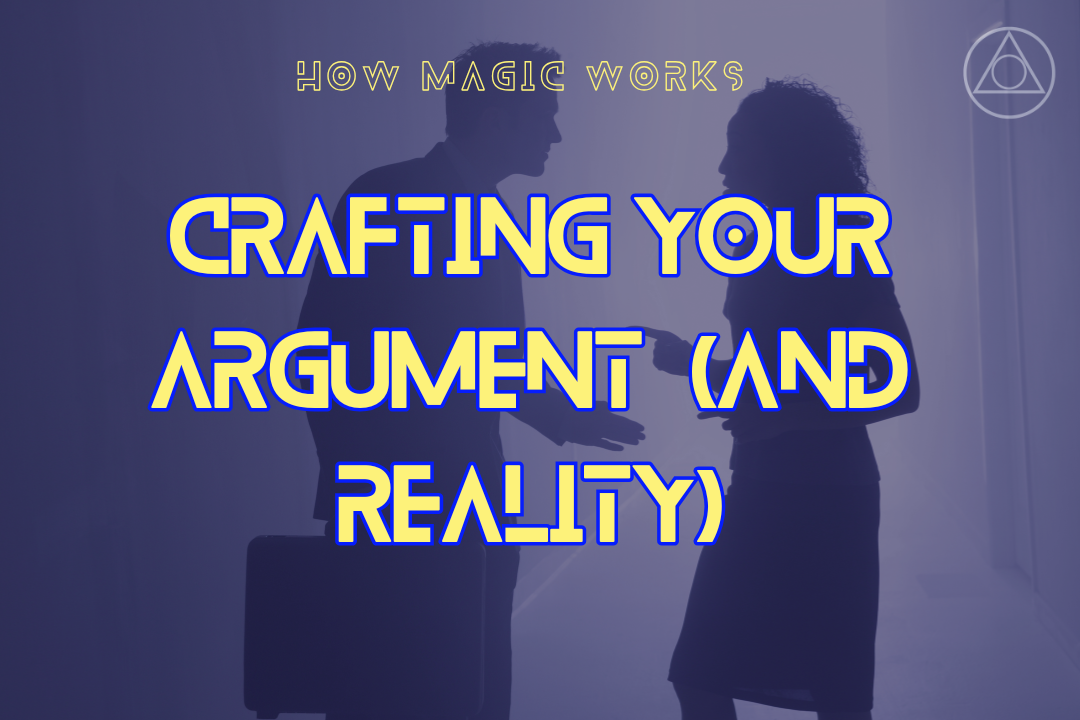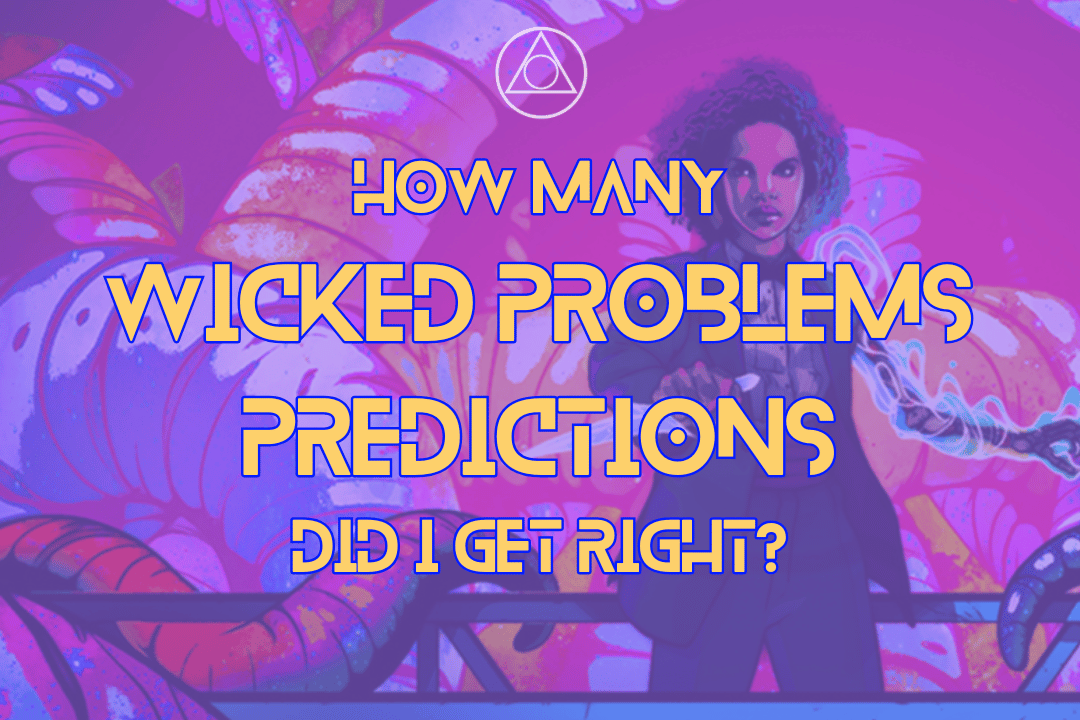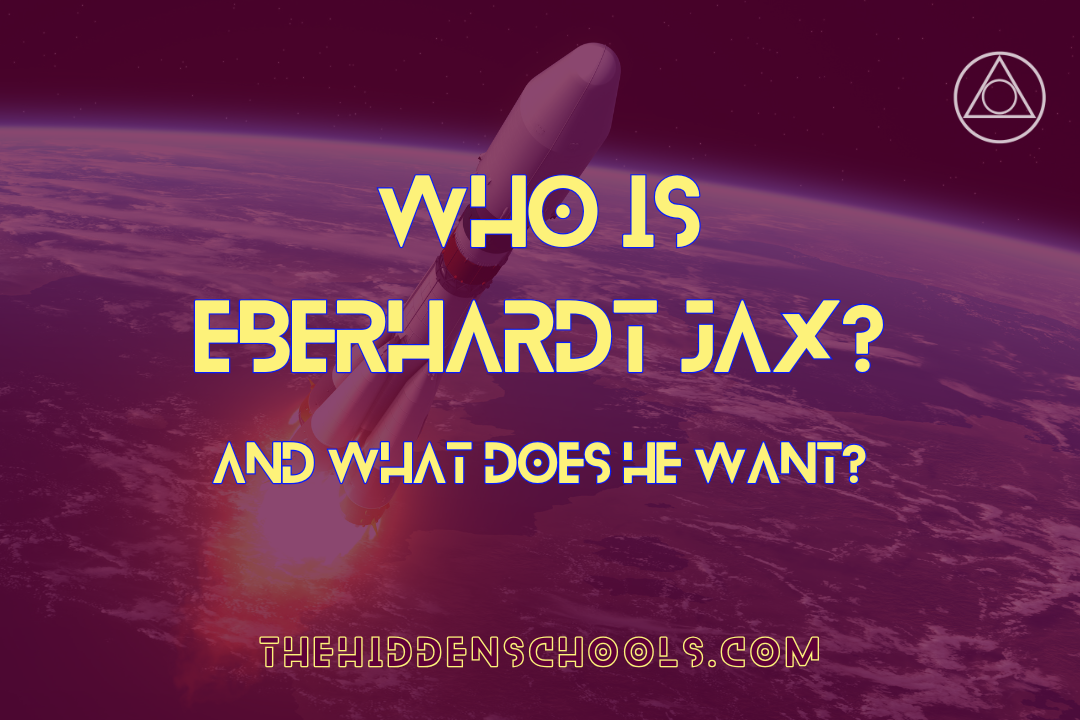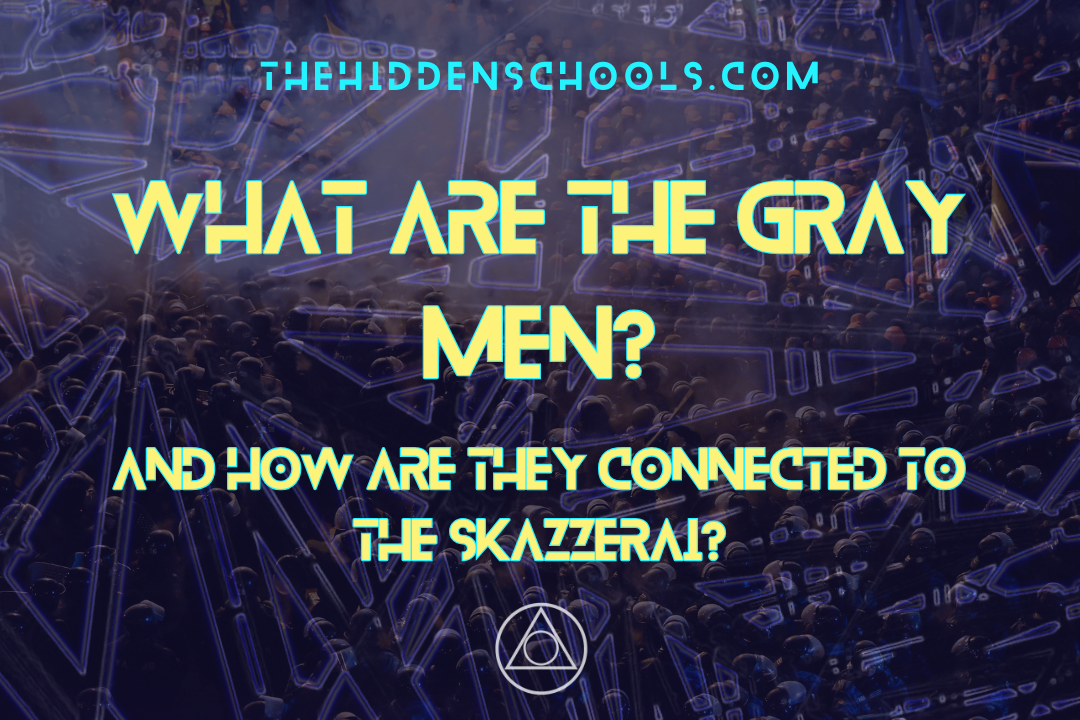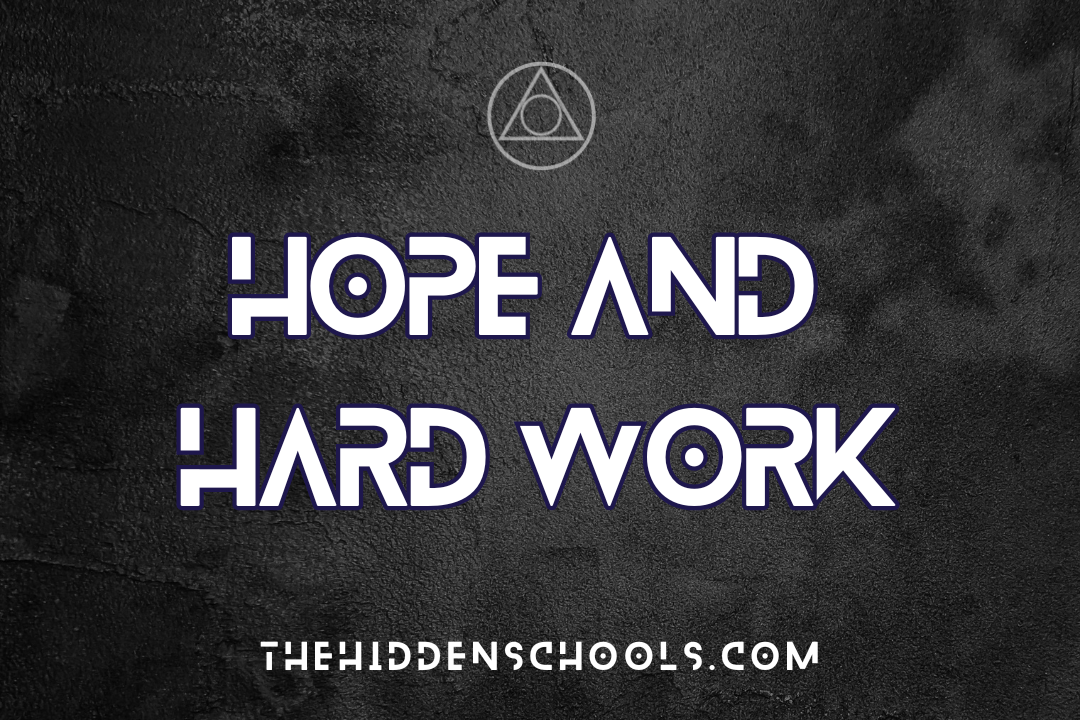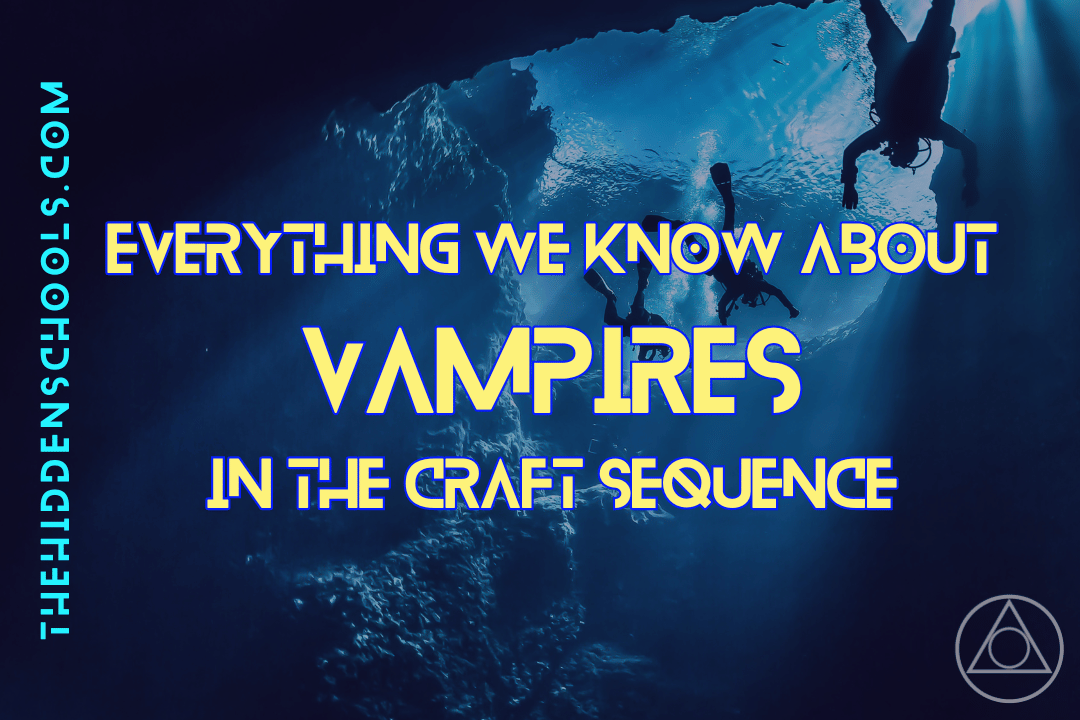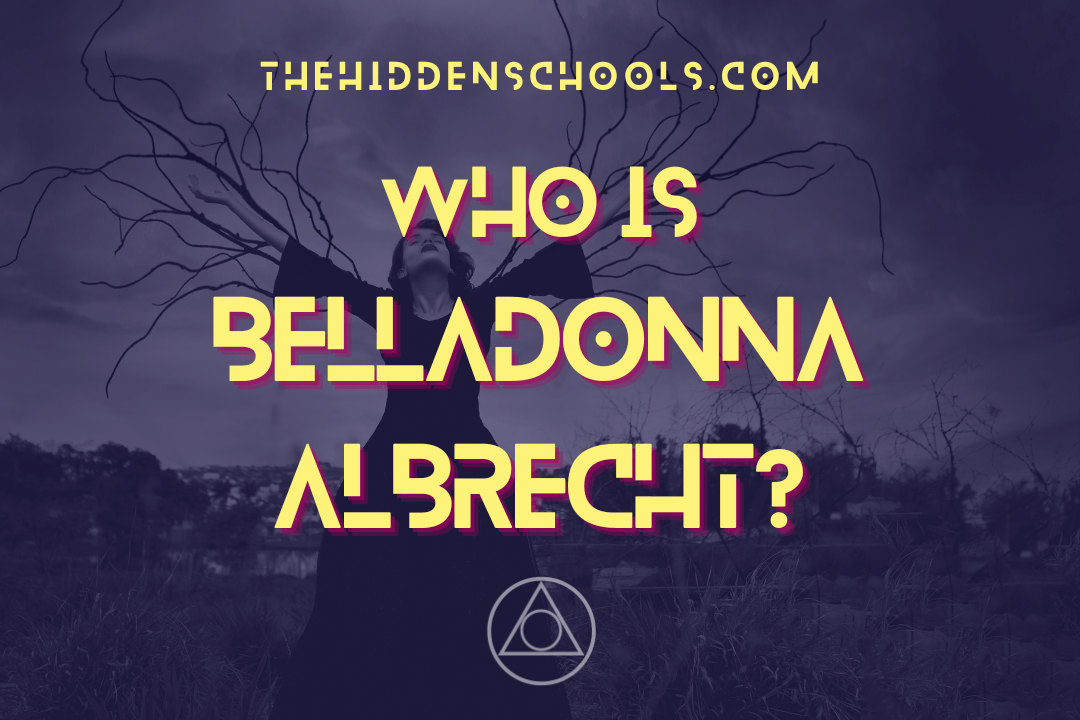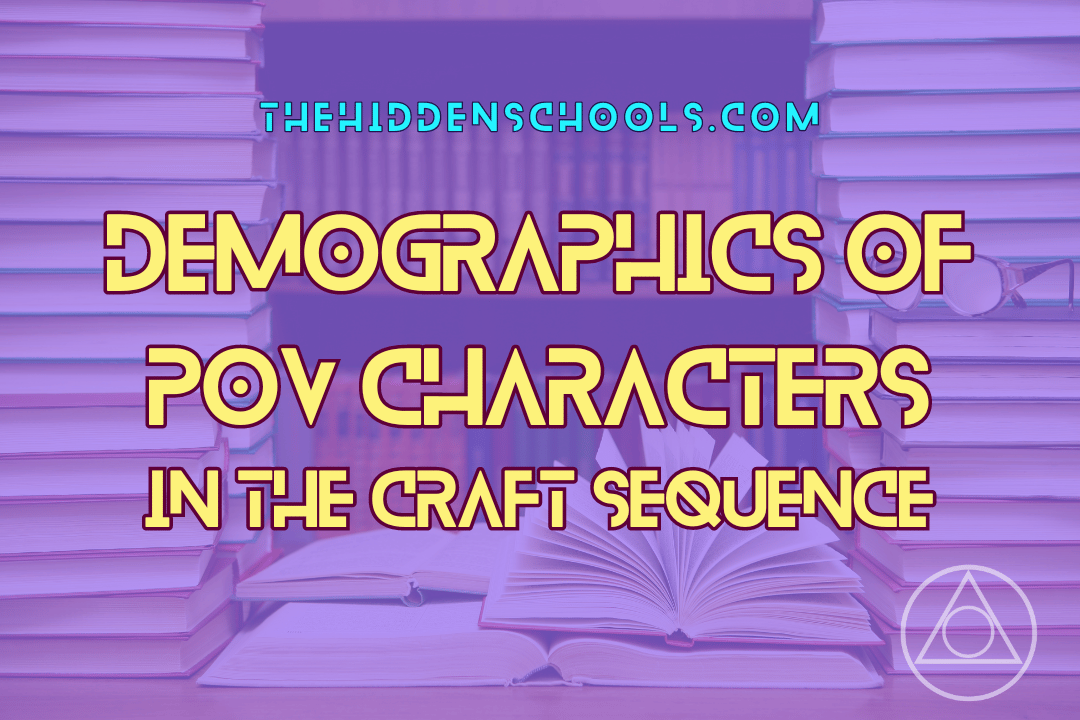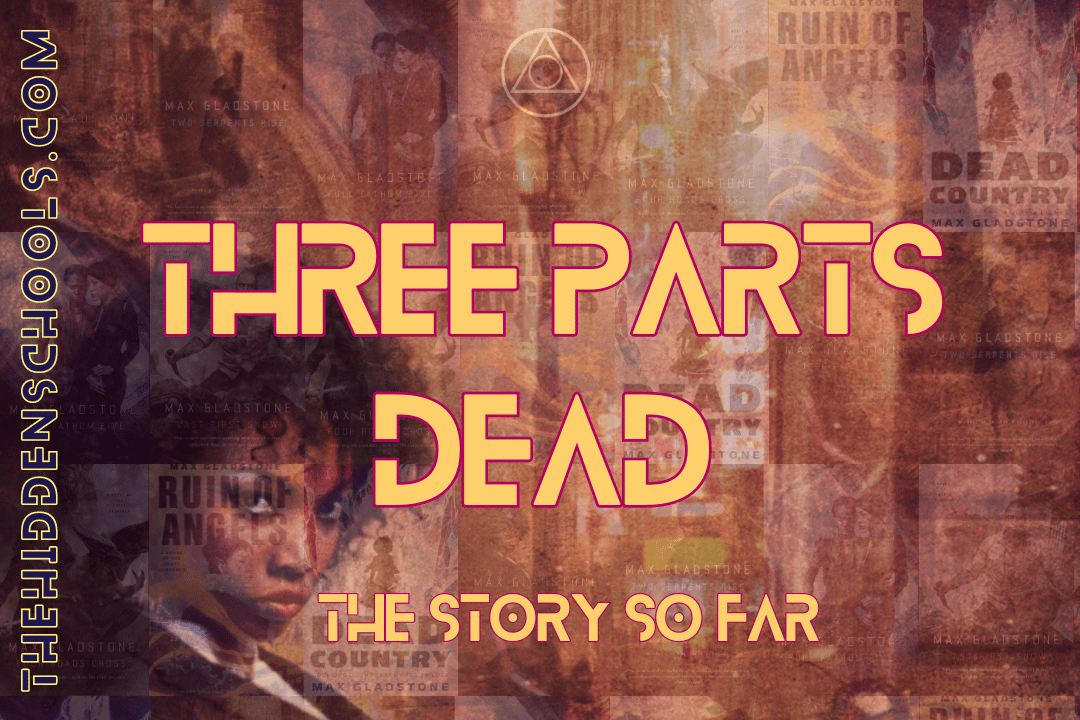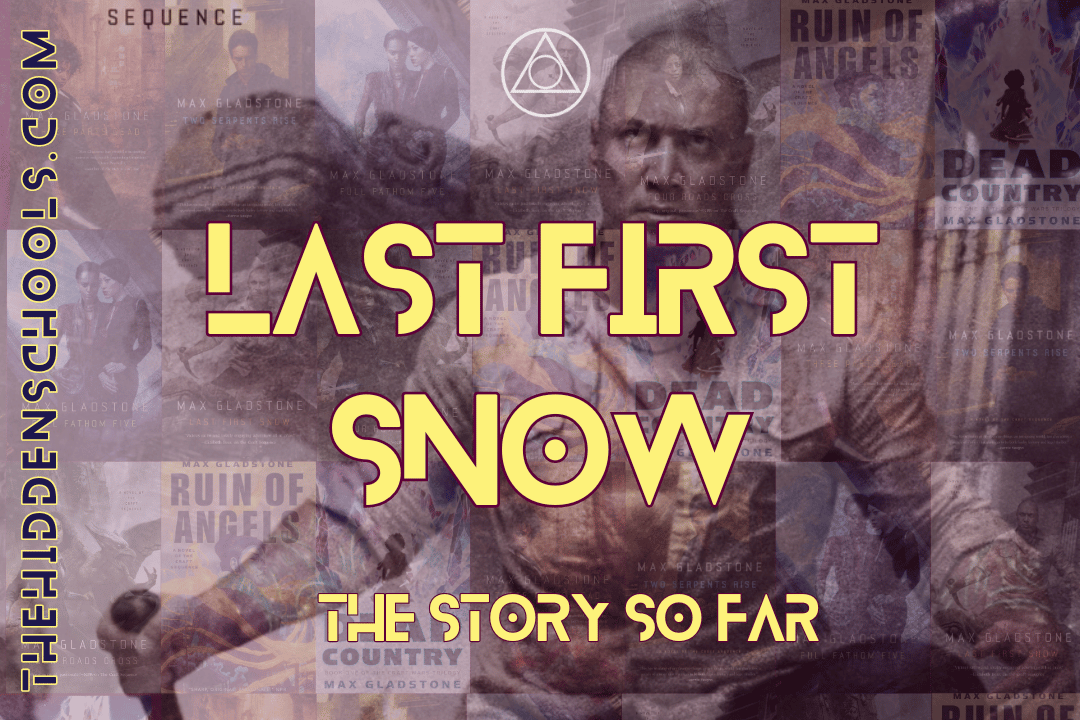The Body, the Others, and what Denovo did in the desert | Space Spiders
Extensive spoilers for Dead Country. This article also builds upon the previous skazzerai / space spider posts, including the seemingly unrelated Denovo article posted recently. You probably want to read them first if you haven’t already:
We haven’t talked at length about Dead Country on the site until this skazzerai series, partly because of Real Life Getting in the Way, and partly because I know a lot of people, especially non-US fans, haven’t had a chance to read the book yet. The main gist of our sort-of-review earlier this year was about Tara and how her story resonated with me, not the plot of the book.
At the time, we referenced that the book, despite its short length, also moves forward the main plot of the series and ties together hints and clues of stories into something huge. This is that plot.
Again, warning for major spoilers for Dead Country and, frankly, all published books.
So let’s talk about the Body, the Others, and what Denovo was doing in the desert.
What was Denovo doing in the desert?
After fighting their way through the edge storm, Tara and Dawn find themselves near the Crack in the World, a break in reality caused by Belladonna Albrecht during the God Wars.
And by this literal crack in reality, Tara finds not a temple, not a dramatically lit cave system, but…
“This was not a cave stronghold where desperate men prayed to a weapon they’d found rotting in the wastes and mistaken for a god. It looked more like an office park. One boxy main building. A garage. A parking lot. There would be desks inside, and a break room with a coffee maker no one ever cleaned, even back before they all died. And cubicles. No one built a building like that without cubicles.”
Yes, an office.
And on the wall behind a reception desk, Tara reads that this building belongs to Denovo’s journal: THE FORUM ON THE WILL AND ITS TRANSFORMATIONS TELLURIAN ANNEX.
I looked up Tellurian, thinking it sounded very Doctor Who-y, and found that according to Merriam-Webster as an adjective it means “of, relating to, or characteristic of the earth” and as a noun means “a dweller on the earth.” In other words, the Tellurian Annex is the planetside office of an organisation that is based in the Hidden Schools and other flying universities.
And what might Tara find in this office park by a crack in reality?
She finds a Craft-god.
Over the course of six books, we’ve learned quite a lot about how gods are created, how they evolve. This idea is explored a bit more in the ‘How Magic Works’ series linked here, so we won’t go into great depth in this article. Suffice to say that gods grow with people, evolving along with cultures based around stories, belief, and an exchange of soul and power.
Gods require worshippers to survive. In many ways, gods are their worshippers. Gods are part of a system of exchange - worship for grace, souls for power. And the Craft is not so different, except a Craftsperson makes that exchange with others or with the world itself, no god required.
Remember that super long quote from the last article , when Tara follows Dawn into the edge storm and sees the future wrought by skazzerai? I said I excised a bit. Along with visions of the future and a voice explaining the spears, she also starts hearing Denovo explain how a system like the skazzerai may work. (Note that the formatting from the book hasn’t carried across - first and third paragraphs are meant to be italicised, what Tara’s hearing through the vision, and the middle paragraph is her own current thoughts.)
“—how? Or who? Or what? Not so different from a god, in fact, though no god could ever evolve this way, gods as a rule being effectively limited in size given the poor state of infrastructure thaumaturgy before the Wars. You must recognise that the Craft’s core contribution to human thought was not the power it offered, but the new way of knowing. Controlled experiments permit optimisation, and optimisation does not accept limits. Gods are an evolutionary process, an emergent phenomenon arising when lesser beings act together. They use souls as a distributed platform to perform grand operations. But evolution is slow, and niche-constrained, and emergence is inefficient. Under Gerhardt we studied how to do what gods did, and then we studied how to fight them, kill them. Why not learn to do what they do, better?
There was a needle before her, yes, and a path, but the lines of lightning drew nearer all around and the thread tied around her wrist was tight, the sigils on her skin aflame. She recognised that last voice and couldn’t let herself believe it—that there would be an echo of Alexander Denovo even here, inside her, the smug assurance of a man more comfortable with being right than anyone she had ever known.
—Gods encourage faith by instinct with the tiny endorphin hits you feel at prayer, with the physical hacks of synchronised breath and music, the endocrine joy of belonging. Why settle for such crude tools? Carve into the substrate directly. Make people better. Make them useful. Make them ideal platforms, rapt in that cocktail of bliss and terror and pain that renders nervous systems predictably responsive. Standardise. Optimise. Iterate. And if we can do this, if we can imagine doing it—assume an isomorphic universe. How special are the conditions required for life or something like it? The system we’re describing would be a strange attractor, many roads in, no roads out—and once it was in a place it would reach beyond—”
Given what we’ve seen in the rest of the book, I think it’s fair to say Tara really is hearing Denovo, though whether this is a buried memory or something she would never have heard but for the edge storm, I’m not sure.
Either way, what Denovo is describing sounds very like what we now know of the skazzerai, and how they may, as argued in the last article, be the logical end point of the Craft. And it connects to his own work in his lab - making people “better”, “useful”, and “ideal platforms, rapt in that cocktail of bliss and terror and pain.” That sounds very similar to what Tara experienced in his lab, what the survivors of the skazzerai felt embedded in the spears, and what the faithful of the Iskari feel in the previously quoted performance reward in the Rectification Authority.
So, Denovo was essentially (whether he knew it or not) studying the skazzerai. But how could he prove his theory?
We learn a bit more about what he was doing in the Tellurian Annex when Tara and Dawn start to explore.
“She opened the second door before she read the stencil—SAMPLE COLLECTION.
She almost closed it again when she saw what lay beyond.
Row after row of glass vats stood in the shadows, some broken, most intact and glowing from within. There were bodies inside, in pieces. One column held fourteen eyeballs, another half-finished hands, a third faces, limp without the structure of underlying bones. She stepped inside and reached up to the column of faces, seeking life in eyeless eyes.
She wished she wanted to throw up. That was what human beings were supposed to do in this situation—not that ‘stumbling on vats of disassembled bodies’ was such a common occurrence as to have a broadly accepted model response. Still, she ought to feel disgust and terror and rage, wet and hot. She should perhaps cry.”
Forgive my French, but what the fuck.
Vats of disassembled bodies? Half-finished hands? Columns of faces with eyeless eyes? Is Denovo a mass murderer, skinning his victims?
Not exactly.
“With her finger, she followed the outline of the face beneath the glass.
“They’re not human,” Tara said, and thought, neither are we.
“They look human.”
“Exactly. But see, here. The dermis is a single layer. The thickness is right but there’s no fatty tissue. I don’t think this is even skin. It doesn’t have the right albedo, you see? Some kind of textured silica or mineral substrate.” She moved on to the eyeballs. “That’s not nerve tissue. The color’s wrong.” She closed her eyes, opened them again. “It looks like the curse—those white threads, without any of the black stuff.”
“If they’re not human,” Dawn said, “what are they?”
Tara shook her head. A pale girl’s mask hung before her. “They have a Craftwork structure, but it’s subtler than I’ve ever seen. Almost theological. He couldn’t do this, not even with his lab. They weren’t built, they were—oh.” She stepped back. “They were grown. Like a god grows bodies.” Dawn looked blank, or terrified. Right. She was still Tara’s student. It was easy to forget. “When a god needs physical form, they sometimes shape matter to match them—make a body out of whatever’s lying around.””
Not human, not human-made Craft, and not quite god-made. This is something new, something we haven’t seen before.
The Body
We know gods can make bodies of a sort; a key example in Tara’s story is how Firekeeper, the ancient goddess near Dresediel Lex, made herself into a mountain. However, she couldn’t make the kind of useful body to move around.
In Ruin of Angels we saw how dying gods tried to form bodies in the sands of the Wastes, to limited success.
And earlier in Dead Country, Tara, Dawn and Connor came across an ‘accident’ in the Badlands, something almost but not quite alive, formed in the God Wars.
In this not-so-mundane office space, Tara and Dawn get into a discussion about what exactly these made bodies might be, and their theory forms the bedrock of what seems to have happened in Denovo’s lab. Time for another mega-quote:
“So, life is a kind of pattern—all life, gods and humans and whatever that was out there. Small patterns link up to make bigger patterns. Each level’s a base for the next, and guards the ones below. You called that thing an accident. And gods died out here.” Dawn bit her lower lip when she was lost in thought. “If you hurt a god, it might hide in something else. Could gods live in less complicated things? In rocks and stones?”
“Not well,” she said. “But when they do, they don’t look like that. You’re on the right track, though. Keep going. What do you need to have, to make a pattern? Say, if you wanted to make a cat’s cradle?” She held her hands apart and spun thin blue lines of Craft around them to demonstrate.
“You’d need string, I guess,” Dawn said. “Fingers. Something to weave the pattern in and against. You’d need time, and energy, that you weren’t using for something else. I suppose those are sort of related, time and energy. You’d need to know how.”
“Generally speaking,” Tara said, “if you want a pattern to arise in nature you need a substrate, which is a fancy way of saying you need something to make the pattern in, plus energy, time, and a seed—any asymmetry’s enough. Any small difference. The more you have, the less time the process takes.”
“And,” excited now, eyes glowing with reflected fire as she leaned in, “there was a war here.”
“Yes.”
“Lots of gods and Craftswomen throwing lots of power around. The desert is the … substrate? Lots of energy. And there were gods and Craftsfolk dying everywhere. Blood on the sand. Abandoned munitions. Plenty of, what was that word?”
“Asymmetry.”
“Asymmetry. So new patterns would form. Not quite gods, not quite machines. Accidents.”
…
“What about the Craft itself?”
“Okay. Run with that.”
“You said a pattern takes substrate, energy, and a seed. All the deals and contracts of the Craft, all those wards and bargains overlapping—they must make really complicated patterns. That’s a substrate. There’s so much energy involved already. And there must be seeds all over the place. Asymmetries. Could there be patterns in the Craft itself? Could it have a mind? Could it grow … accidents?”
“Craftwork can host minds—that’s how Deathless Kings survive: they create frameworks of Craft to host the self-perpetuating patterns of their minds. And I’ve seen Craftwork constructs that caught sentience from gods—but that was on Kavekana, and those constructs were being treated like gods anyway, with priests and worship and everything. You’re not talking about that. You’re talking about truly autonomous behavior. The system acting on its own. Self-aware.”
Eagerly: “Could it happen?”
“I don’t think so. The rules of the Craft are rigid—they were made that way. The Craft takes, and it doesn’t give back. Gods come out of gaps, of slack, of quiet spaces, and the Craft doesn’t have a lot of those. We build contracts and systems to reduce uncertainty—so while there’s a lot of energy involved, very little of that energy is free. But we make a lot of transactions, and they bunch up against one another, and that bunching-up sends ripples through the system as it seeks balance, equilibrium. Patterns emerge. Maybe one day those patterns would gain enough complexity to wake up.” She shook her head. “I have to admit, I hope not.”
…
“If it did, how would we know? It would look like a problem at first: a system behaving in a way we didn’t expect. The first step most professionals would take if a contract started to behave weirdly would be to find out what was happening and stop it. When a corpse wakes up, the mortician stabs it through the heart before it can rise. If the Craft was aware, its first experiences would be of waking only to be killed, again and again.” She adjusted the coals. “I lost a year that way in Denovo’s lab before I could break free. I don’t know what was a dream and what was not. I wouldn’t wish that on anyone.”
One doesn’t lay out this amount of foreshadowing without followthrough. Tara and Dawn have found the vivisected remains of a self-aware Craft being that tried to give itself a body, and was killed again and again. Much like the Blue Lady was repeatedly killed in the pool at the top of Kavekana’ai, this Craft-god came into awareness, body and life only to be murdered by Denovo, over and over.
After finding the vats of disembodied parts, Dawn pulls aside a curtain and reveals what Tara has already figured out, but doesn’t want to confront:
“Those big crystal stanchions are trading terminals, portals for the seven markets—the stock and commodities exchanges. With those you can buy and sell pieces of Concerns in Alt Coulumb, in Camlaan, in the Shining Empire, in Iskar, all over the world. But they’re … integrated. It looks like he’s built small Concerns that trade on each exchange in a deterministic way, and transfer soulstuff between them, but he’s chained their ownership structures in a loop. You see how all the lines lead inward? It’s like a wave tank for Craftwork trading. Your rat maze in reverse. Any pattern in the market would be replicated here eventually, and intensified. But when it tried to leave … Those glyphs around it, those are Quechal glyphs, and that pattern’s Kavekanese. He’s made a huge Craftwork system here but he’s guarding it with theology, so whatever stumbles in won’t stumble out again. All that just to let markets mutter nonsense to themselves.”
“Tara.”
But they weren’t muttering nonsense, were they? She heard her own voice then, their first day in the Badlands: transactions bunch up against one another. Ripples through the system. Seeking balance. Equilibrium. Patterns emerge. Maybe one day those patterns would gain enough complexity to … wake up.
“Tara. The wires.”
“I see it.” Her mouth was dry. “The curse.”
“No. Look with your eyes closed. See all of it at once.” She did not want to look, because she did not want to see. Because she knew what was there.
The theological wards formed a circle. And trapped inside, impaled on the wire web … It was an incomprehensibly dense tangle of blazing Craftwork, of ownership structures and trades. But if she stopped trying to interpret them as individual deals, and looked instead at the gestalt, at the shape welling up from the chaos like a whale from the sea …
There was a woman, with wings, pinned like a butterfly on a web of wire. She had many eyes and many mouths. She was limp and still, and white thread leaked from her wounds. Dead. Dead years gone. Whoever she was. Whatever she had been.
“Do you see her?”
She could not answer. She could not speak.
Denovo had set a trap, in the sea of thaumaturgical exchange. And he had caught something—an emergent phenomenon in the Craft, pinned here, distilled and focused. Trapped in the physical world. “She kept trying to grow a body,” Tara said. “And he kept cutting it away.”
An entity of unimaginable power, imprisoned in a dimension she did not understand. Tortured. Starved. Furious. Afraid.
And then Denovo died. His protection waned. And one day the Raiders’ simple hungry curse wormed through this lab’s rusting fence looking for a meal, wandered down here, found this great dead Body—and ate it.
The flesh of that trapped and starved and tormented Body changed them, bound them close, made them hungrier. The raids got worse. Her father, at last, shamed by his friend, joined the guard, and died protecting Connor. Then Connor, out of a misguided sense of obligation, led Tara out into the Badlands, and now Tara had to save him, too.
Asymmetries. Patterns seeded patterns like themselves. She burned Denovo’s lab—but he had another. She broke his power in Alt Coulumb—which left this Tellurian Annex to decay, and gave the Raiders new power, and a more vicious hunger. She drowned in echoes. ”
When trying to sort through my thinking for this article with a friend, she pointed out an interesting parallel I hadn’t noticed. The Body, this being of such immense power, was trapped, carved up, consigned to an existence of pain and death. At the start of Four Roads Cross, Tara is charged with disposing of Denovo’s own corpse. We read that:
“How does one discourage antisocial behaviour among formerly human beings for whom life imprisonment is a brief inconvenience, if not an undefined term, and the death penalty a slap on the wrist?
The answers ranged from grotesque to merely inhumane, but all shared a theoretical foundation: you don’t let the dead go free.”
Tara drains his body of blood, peels away muscle and fat to the bone, and “carved through Craftwork sigils, hidden mechanisms and machines.” She burns his organs, and breaks his skull from his spine. The rest of the body is disposed of, but his skull is kept in a lead-lined box and warded “thrice with shadow and silver to prevent Craft from leaking in or out.” We know the skull is important, as Madeline Ramp attempts to have it stolen so she can unlock Denovo’s secrets. Tara stops her, and we find out in Dead Country that she uses the skull as a paperweight. It is this reminder that makes me think we may see Denovo again in some form of life or memory - we know he has secrets, we know the skull is the key, and we know Tara has the skull. It’s Chekhov’s skull. In the third act, it has to go off.
But the interesting thing my friend pointed out is the parallel: Denovo carving up the Body to keep the Craft-god trapped, and Tara doing the same to him. It’s something satisfying and horrifying in equal measure.
And, speaking of foreshadowing and Chekhov’s skull, we then learn the Body is not as dead as it may seem. The Craft-god is alive, seeking a vessel. It nearly takes Tara, but instead is invited into Dawn. Tara attempts to slay it, but it - she? - escapes.
The last we hear of Dawn and the Craft-god is from Shale in the last pages of Dead Country:
“We saw something, when we came through the bridge. A figure like a tower of light. She fought us briefly, but when Lord Kos set his weight against her, she fled. She was not ready to face Goddess and God and Guardians at once.”
“She will be,” Tara said, “Now that we know she’s there, she has no choice.”
This feels like the introduction of the Big Bad, the ultimate Boss to fight at the end of the story.
Yet, we already know - we think - about the Big Bad. The skazzerai.
How the hell do they fit in here?
What does this have to do with the skazzerai?
Pulling all the threads together (how on earth did Gladstone get this much plot progression in the second half of a short book???) we’re left with this conclusion:
The skazzerai are the Craft-god. The Craft-god is the skazzerai. Or, at least, they’re the same type of phenomenon. The Dawn-Craft-god meld isn’t a space spider hungering at the end of the universe, but how she was made is the same way they were.
The skazzerai are the Craft come to ‘life’, emergent network phenomena at the end of the universe, making bargains with their potential victims, hungering after souls and the Craft. And that sounds exactly like the Craft-god: she emerged from the Craft usage in the Domain, made a bargain with Dawn for escape and control (surrender all, gain all), and is hungering for more.
Before Dawn makes the deal, it’s Tara who interacts with the Craft-god and is nearly eaten.
“Yes, the Body said. Yes, it had said, its words arriving in her memory, as if she had known them since before she knew her own skin. Yes We Are The Same And You Feel The Truth And We Must Be One Against The Hunger And The Others That Come From Far Away And We Know Them And We Know The Knife And We Know There Must Be Pain And We Know One Holds The Leash And We Know That Always There Are Chains And We Know What Must Be Done—
She could not breathe. She fought against that hunger, but it was like trying to swim against a rip tide. We Know. What did it know, trapped down here, what did it know, cut and sharpened by Denovo’s mind, his blade, what did it know of her? It was scared, like a drowning woman was scared, and it would consume her, gnash her in the teeth of its suffering. She would be there, bound inside this web, his blade always in her flesh, taking her apart. She was more than the pain.
Wasn’t she?
We Know This Must Be And We Know The Others That Come From Far Away And We Know You And You Are Needful And We Must Know You With Our Teeth—”
Hunger is often associated with the Craft. We probably need to write a whole article about that, but for now take it as a given. The Craft-god hungers. She starves. And that’s exactly what we hear about the skazzerai. The Craft-god is merely a younger proto-skazzerai.
And because she’s not one of them, she may become a meal for them herself, for the “Others That Come From Far Away.” She knows she is like them, one of them but still separate - they are the others, and they are coming.
“They’re coming.” The truth filled Dawn’s eyes, made her form fierce and rigid. “We have to be ready. I’ll do what you weren’t strong enough to do. And you will help me. Whether you want to or not.”
So what’s next? I can only assume we’ll see much more of the Craft-god, the skazzerai, and possible Denovo in Wicked Problems and the as-yet-unnamed finale.
There’s also a bit more we could go into about the Craft-god and its connection to Tara but you’ve just read this article and know it’s plenty long enough. Can you believe this and the previous two were meant to be one? I appreciate everyone who reads the site, but I can only imagine that would have appealed to maybe 2 people other than me.
I’ve just started a new job so who knows how much I’ll be able to write this side of Christmas, but there’s lots more in the pipeline. If you sign up to the mailing list you’ll be the first to know about what’s new. I only email when there’s a new article so you definitely won’t be spammed.
My ARC of Wicked Problems is also winging its way across the Atlantic to me so I’ll probably flail (in a spoiler free way) about that all over social media. See you there?
What do you think? Let me know - and don’t forget you can subscribe to be the first to hear about new articles and fun projects in the pipeline.


